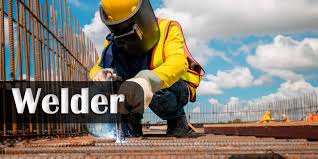
ITI IN Welder (1 Year)
ITI Welder (1 Year) Syllabus
1. Introduction to Welding
- Definition and importance of welding in industries
- Different types of welding processes (Arc, Gas, MIG, TIG, etc.)
- Classification of welding joints and positions
- Comparison with other joining methods (e.g., riveting, bolting)
- Career opportunities and scope in welding
2. Arc Welding (SMAW – Shielded Metal Arc Welding)
- Basic principle of arc welding and arc generation
- Types of welding machines (AC, DC, inverter-based)
- Types and classifications of electrodes (based on IS codes)
- Factors affecting arc stability and weld bead formation
- Common arc welding defects and how to prevent them
3. Gas Welding (Oxy-Acetylene Welding)
- Principle and working of oxy-acetylene welding
- Components of gas welding setup (regulators, torch, hoses, etc.)
- Types of flames (neutral, carburizing, oxidizing) and their applications
- Welding techniques for different joint types
- Precautions and safety in handling gas cylinders and flame
4. TIG & MIG Welding (GTAW & GMAW)
- Difference between TIG (GTAW) and MIG (GMAW) welding
- Equipment and consumables used (electrodes, shielding gas, wire feeder)
- Selection of current, voltage, and gas based on material
- Advantages of TIG/MIG over traditional methods
- Common problems and troubleshooting in TIG/MIG welding
5. Welding Symbols and Engineering Drawing
- Basic elements of engineering drawing
- Symbols used in welding as per BIS standards
- Types of joints (butt, lap, corner, T, edge) and their representations
- Understanding weld size, length, and finish symbols
- Reading and interpreting fabrication drawings and blueprints
6. Welding of Different Metals
- Characteristics of ferrous metals (MS, SS, Cast Iron)
- Characteristics of non-ferrous metals (Aluminum, Copper, Brass)
- Welding techniques for each metal type
- Effects of welding heat on metal structure
- Importance of preheating and post-weld heat treatment
7. Cutting Processes
- Principle of oxy-fuel gas cutting
- Plasma cutting – introduction and applications
- Arc gouging and its industrial uses
- Differences between mechanical and thermal cutting
- Safety precautions during gas and plasma cutting
8. Weld Defects and Inspection
- Classification of weld defects (internal and external)
- Causes of common defects (porosity, cracks, undercut, slag inclusion)
- Visual inspection and dimensional checks
- Basic Non-Destructive Testing (NDT) methods – dye penetrant, ultrasonic
- Quality standards and acceptance criteria
9. Industrial Safety and Environmental Awareness
- Use and maintenance of Personal Protective Equipment (PPE)
- Safety signs and signals used in welding shops
- Fire safety and first aid measures in welding
- Safe handling of gas cylinders and electrical equipment
- Environmental effects of welding fumes and waste disposal methods

